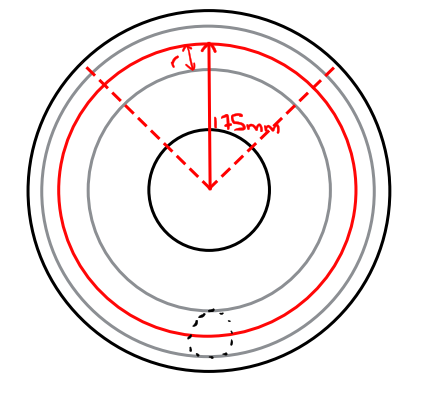So I'm given this question with the following diagram:
Two sections of a pipe are joined in a flanged joint as shown in the Figure below. The difference in pressure from interior to exterior is 2 MPa.
The joint is connected with 12 off bolts, equally pitched around a pitch circle diameter of 350 mm. If the maximum allowable tensile stress on the bolts is 300 MPa, what diameter do the bolts need to be?
My working out
First I find the area of the section that the bolt's diameter takes up:
$A = \pi (0.175+r)^2 - \pi(0.175-r)^2 $
$A = 0.7\pi r\ $
Then I find out the force acting on that area of section and divide by twelve to obtain the force for a section that has one bolt.
$F_{12} = (2\times 10^6)(0.7\pi r) = 14 \times 10^5 \pi r$
$F_1 = 366519.1429r$
I then sub this into the stress equations since I know the maximum tensile stress for 1 bolt:
$A = {F_1 \over \sigma_{max}}$
$\pi r^2 = {366519.1429r \over 300 \times 10^6}$
$Diameter = 0.039 m$
But the answer I'm given says it is supposed to be 5.9mm. Is there anything wrong in my thinking?

